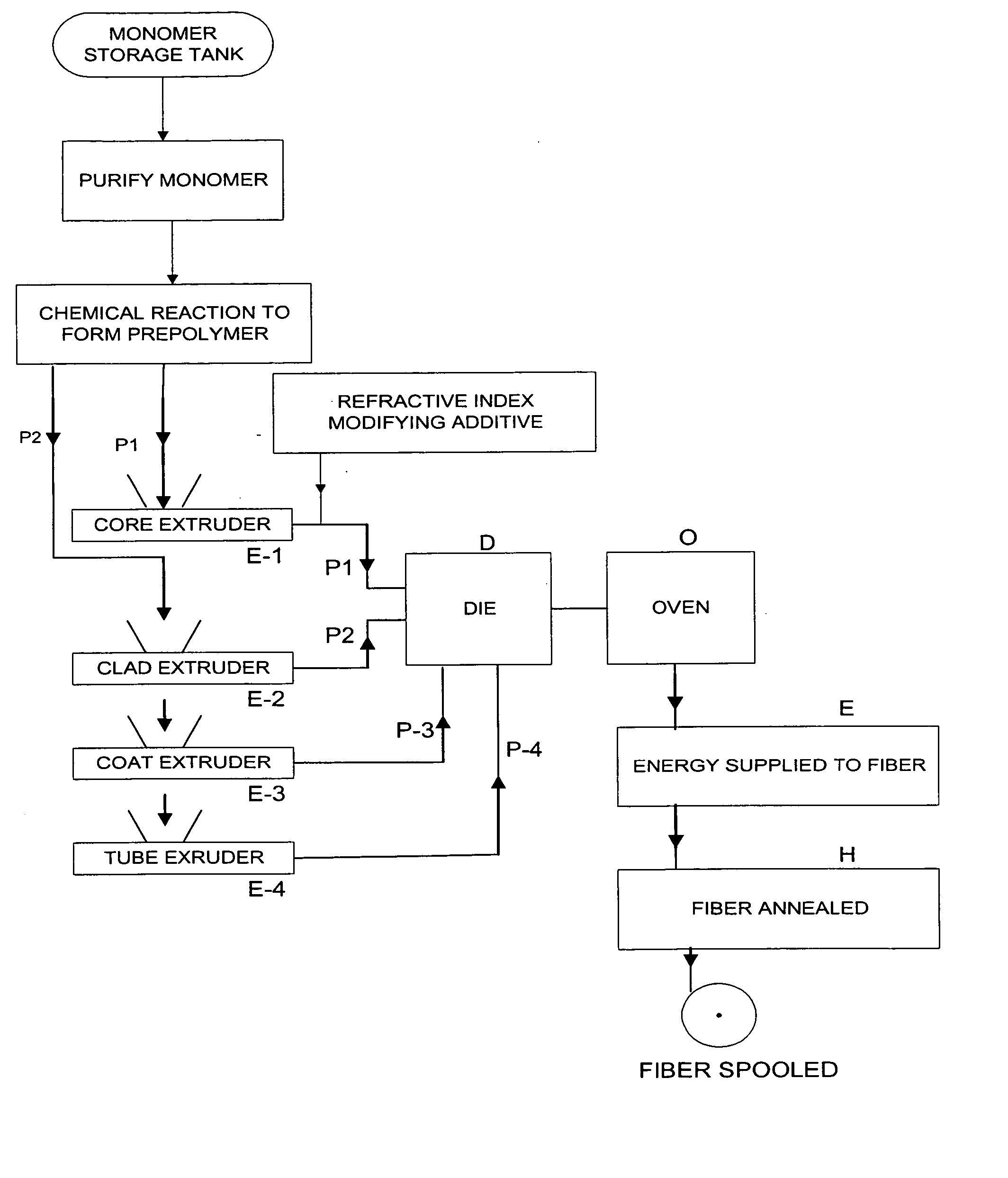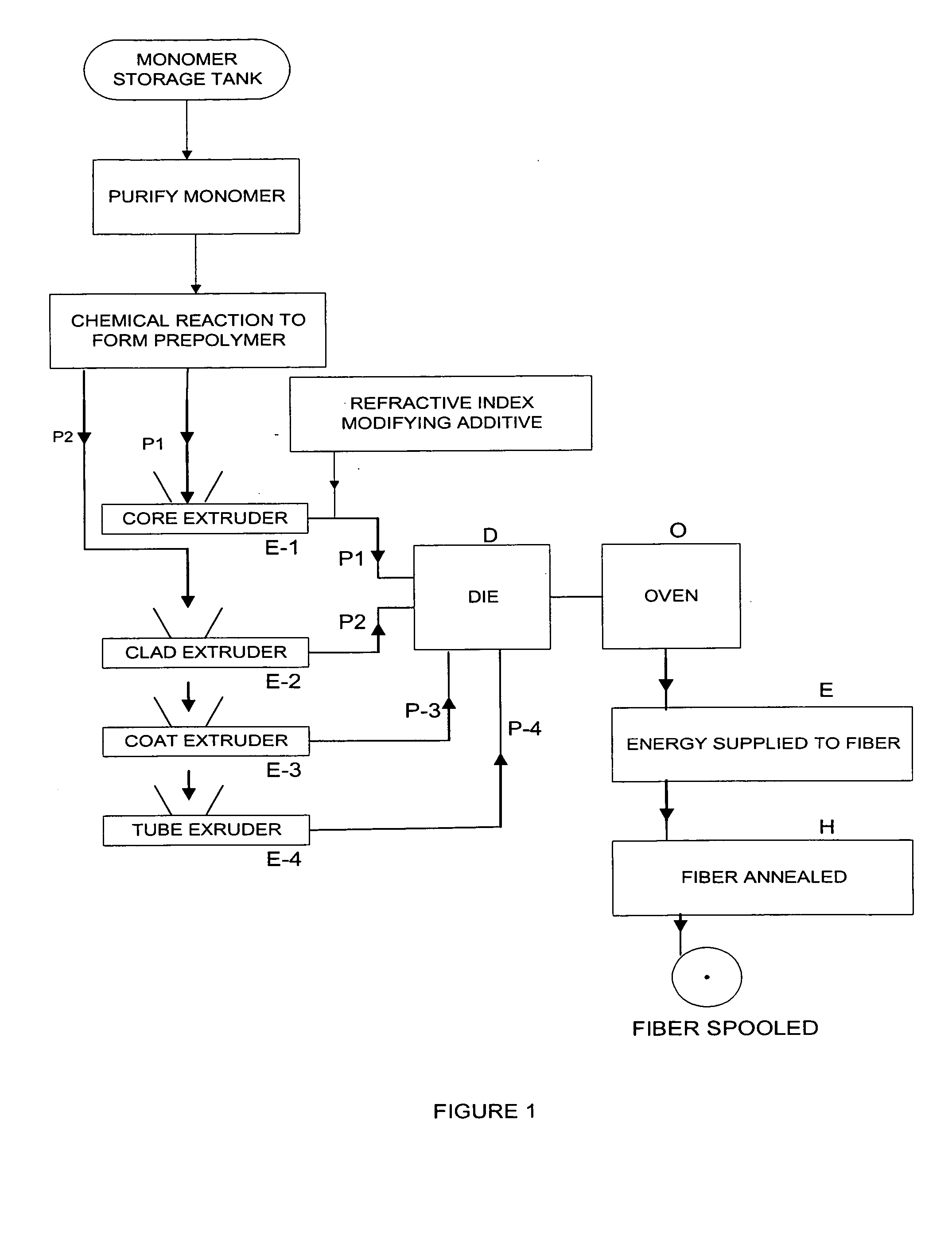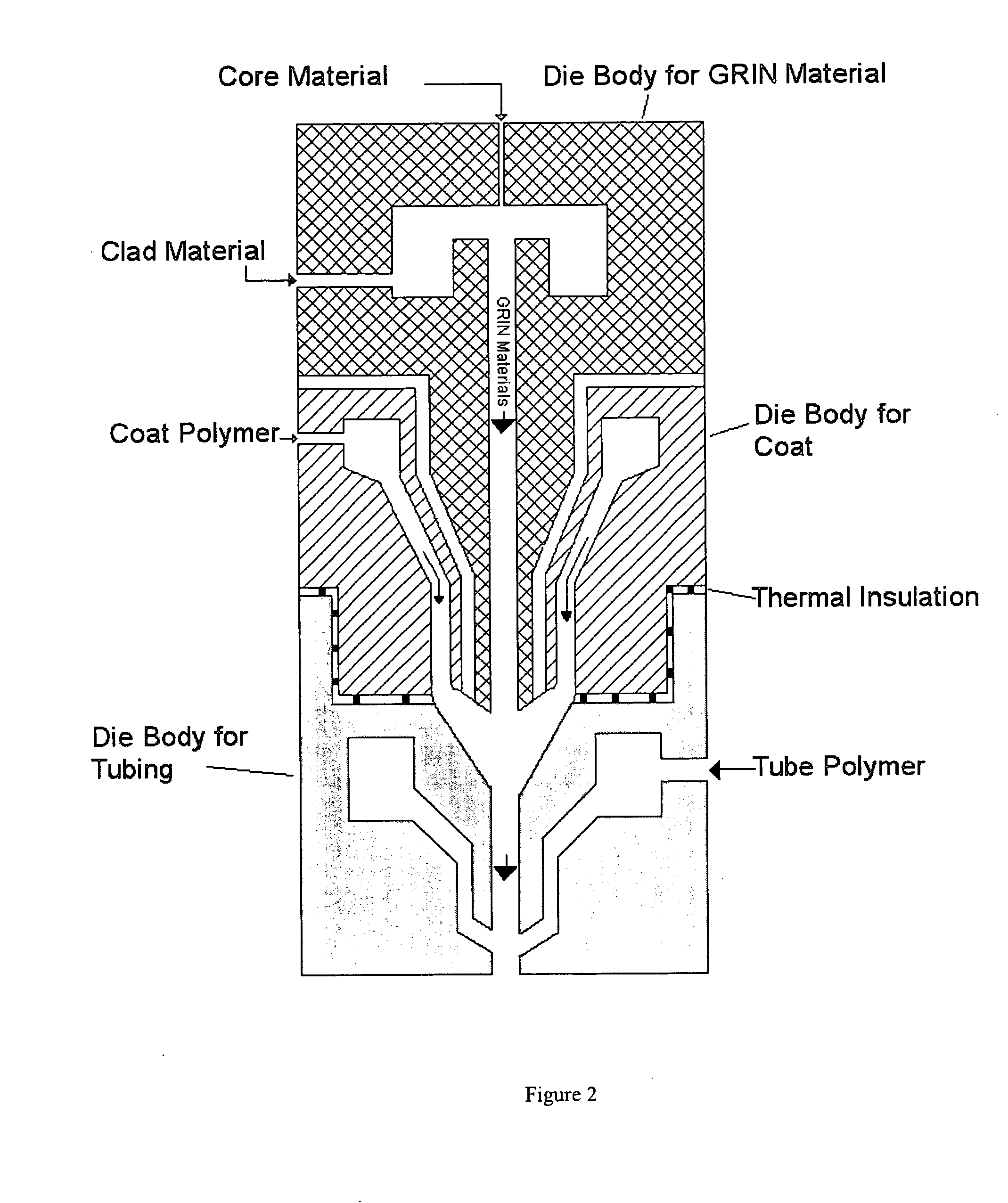Method and apparatus for manufacturing plastic optical transmission medium
a technology of optical transmission medium and manufacturing method, which is applied in the direction of instruments, other domestic objects, optical elements, etc., can solve the problems of inability to commercialize, inability to manufacture methods, and inability to achieve commercialization. commercially viable, reduce the effect of density fluctuations
- Summary
- Abstract
- Description
- Claims
- Application Information
AI Technical Summary
Benefits of technology
Problems solved by technology
Method used
Image
Examples
second embodiment
In the subject invention, an index-lowering additive is added to the cladding polymer, with no other additives used.
third embodiment
In the subject invention an index-raising additive is added to the core polymer and an index-lowering additive is added to the cladding polymer, with no other additive used.
fourth embodiment
In this invention, an index-raising additive is added to the core, an index-lowering additive is added to the cladding polymer, and an index-lowering additive is added to the coat polymer.
The subject invention pertains to a method of fiber manufacture which permits a light attenuation of ≦10 db / km at 850 nm wavelength. The light loss of existing commercial LUCINA fiber is typically 20 to 30 dB / km at 850 nm.
The subject invention also relates to a method to simultaneously produce a fiber whose GRIN profile is stable up to 85° C. and has an optical attenuation at 850 nm of ≦10 dB / km.
A reasonable criterion for immobilization of additives in the polymer is that the maximum operating temperature Top, of the fiber should be at least 20° C. below the glass transition temperature, TgPlasticized, of the plasticized polymer. This may be written as:
TgPlasticized≧Top+20° C.
Different additives can cause quite different reductions in the glass transition temperature of the pure polymer who...
PUM
| Property | Measurement | Unit |
|---|---|---|
| glass transition temperatures | aaaaa | aaaaa |
| glass transition temperatures | aaaaa | aaaaa |
| temperature | aaaaa | aaaaa |
Abstract
Description
Claims
Application Information
 Login to View More
Login to View More - R&D
- Intellectual Property
- Life Sciences
- Materials
- Tech Scout
- Unparalleled Data Quality
- Higher Quality Content
- 60% Fewer Hallucinations
Browse by: Latest US Patents, China's latest patents, Technical Efficacy Thesaurus, Application Domain, Technology Topic, Popular Technical Reports.
© 2025 PatSnap. All rights reserved.Legal|Privacy policy|Modern Slavery Act Transparency Statement|Sitemap|About US| Contact US: help@patsnap.com



